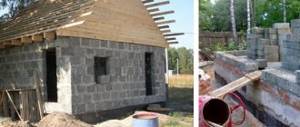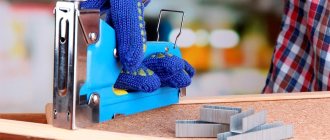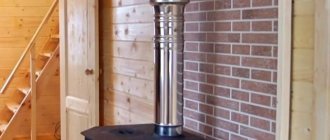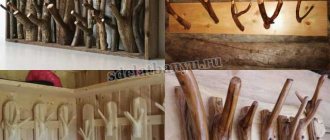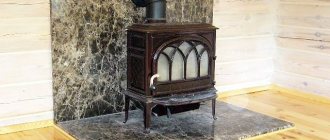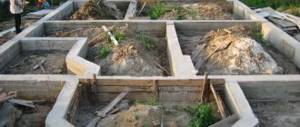If you approach interior design not only from the point of view of aesthetics, but also maximum safety, then non-combustible panels for interior decoration are the most appropriate solution. They harmonize perfectly with other finishing materials, which allows them to be used in a variety of combinations.
There are many non-combustible panels on the construction market, varying in shape, size, color and material. Regardless of the source raw material, this finishing material has similar characteristics:
- The products are made from inorganic material and are therefore not susceptible to damage by mold and mildew.
- The slabs are easily installed on a frame sheathing or a pre-prepared (leveled) wall.
- The panels are made from raw materials that do not emit toxic fumes under any operating conditions, so they can be called environmentally friendly.
- All types of non-combustible cladding slabs have good sound and heat insulating characteristics. These indicators directly depend on the thickness of the base material of their manufacture, as well as the thickness of the layer, which is both decorative and protective and is about 1.5 mm.
- A special protective layer is applied to the non-flammable coating, which perfectly resists high levels of humidity in the room and is easy to maintain even when using household detergents.
- Finishing panels are distinguished by a variety of colors, which makes it possible to choose the most suitable option for decorating a particular interior.
- Along with all panel materials for finishing, non-combustible slabs ideally hide all the imperfections of the walls, leveling their surface.
- The products have an outer layer of decorative coating, so they do not require additional finishing.
- Installation and finishing work using such panels proceeds quickly with the formation of a minimum amount of construction waste and dust.
Varieties
Non-combustible building materials are classified according to several criteria. By purpose they are distinguished:
- insulators;
- for insulation;
- non-combustible finishing materials for walls, floors, and ceilings.
In addition, the products differ from each other in the way they transfer heat:
- temperature-resistant due to physical and chemical properties;
- materials that reflect heat.
By release form:
- leafy;
- panels;
- roll
By place of use:
- for interior decoration;
- for installation outside buildings and structures.
Important! In addition to the basic fire-fighting properties, fire-resistant products may have additional parameters. For example, moisture resistance allows it to be used in the kitchen, bathhouse or swimming pool. High sound absorption rates allow the material to be used for insulating music studios, cinemas and other facilities.
Fireproof fireproof panels "Gypsoacryl"
Trade marks
There are many types and brands of both completely non-flammable and fire-resistant fabrics on the market:
- Tend building fabric is a non-flammable material that corresponds to group NG, hazard class KM0. It is used as a steam-, wind-, and heat-insulating material for ventilated facades, roofs, and floors of buildings. The material is resistant to moisture, aggressive environments, sudden temperature changes, and exposure to ultraviolet rays.
- Thermally resistant silica fabric KT-11 . SiO2 content – up to 99%. The main qualities are fire resistance up to 1200℃ (long-term), strength, dielectric, environmental properties, which makes it a multifunctional material.
- Basalt fabric TBK-100 coated with metal foil. The operating temperature range is from – 200 to + 650℃, melts at 1100℃. Used in the production of rolled roofing materials as thermal insulation.
- Izoltex fabric is made from fiberglass. Operating temperature – up to 560℃, maximum short-term – 700℃. It has excellent thermal insulation properties, is chemically inert to strong organic and mineral acids, concentrated solutions of alkalis. An excellent substitute for asbestos fabrics, used in construction and various industries.
- Kevlar, Arcelon, Terlon, Kermel, Nomex are various trademarks, names of types of aramid fabrics that are thermally resistant in the range from 250 to 400℃.
For fire-retardant treatment of natural fabrics, the following impregnations are used: “Negorin-fabric”, “OGNEZA-PO”, “Nortex”, “ANTAL TM”, which do not change their appearance, do not reduce strength, and do not have an unpleasant odor.
Important: for each batch of such products, regardless of the volume of the batch, the customer or buyer has the right to demand a fire safety certificate of conformity, which specifies all the necessary characteristics.
Definition
Non-combustible materials are products that, when exposed to flame, sparks, high temperatures, electric current, or chemical reactions, do not ignite, do not smolder, do not spread fire, or emit smoke. There are natural and artificial materials. In addition to fire-fighting qualities, other parameters are also important for building materials:
- deformation when wet;
- deformation when heated;
- heat conductivity;
- degree of moisture absorption;
- bending strength in dry and wet conditions;
- density;
- strength;
- tensile strength;
- specific viscosity.
Additional qualities determine the possibility of use for certain purposes.
Rolled refractory materials
Determination of criteria for flammability of materials
Speaking about fireproof finishing, you should have an idea of the criteria according to which the flammability group of materials is determined. Such evaluation parameters include the following factors:
- toxicity of substances released during combustion;
- the rate of ignition of materials and the spread of fire;
- the ability to maintain a fire in an oxygen-free environment, that is, the ability to quickly extinguish the flame by blocking the access of oxygen to it.
A truly high-quality material must receive the highest ratings for all three criteria and only then is it classified as fire-resistant. However, on store shelves you often find panels labeled as low-flammability. Next, we'll look at how to make the right choice.
The very name of the non-combustible finishing material indicates that the panels should not be subject to destructive changes under the influence of open fire, various chemical reactions and be resistant to high heating temperatures. In such extreme conditions, there should be no release of by-product gaseous substances that pose a danger to human health. All other panels, which are marked “G1”, “G2”, “G3” and “G4”, are combustible finishing materials. The designation is determined by increasing their resistance to fire. For example, the last two groups “G3” and “G4” are frankly fire hazardous and are not acceptable for interior decoration in accordance with current standards.
Low- and moderately flammable decorative boards, as a rule, ignite not only from an open flame, but also from severe overheating. However, the material used for their production or coating does not support combustion and prevents the spread of fire. Thus, they can be called self-extinguishing. This category of finishing materials includes wood-fiber and particle boards (fibreboard and chipboard).
Scope of application:
- for roofing, for example, natural tiles;
- for finishing walls and ceilings, partitions and ceilings;
- for the installation of indoor fireplaces, stoves, boilers, potbelly stoves, electric stoves, stoves, including stove chimneys, combustion ducts and other heating system communications;
- for cladding facades.
On a note! Since civil and industrial facilities require the presence of people, NG is subject to requirements for environmental safety and compliance with sanitary and epidemiological standards.
Until recently, NG materials were used to insulate heating objects, but now materials are on sale that not only have fire-resistant properties, but also aesthetic qualities. They are used for finishing and simultaneously perform two functions. Thus, there are wall panels with a bamboo-like front surface, wallpaper with a metallic coating, and others.
Termoizol
Main characteristics of fire-resistant fabrics
Fire-resistant fabric has a number of characteristics that no other material can compare with:
- products made from such fabric are hypoallergenic;
- ultraviolet rays do not affect it in any way;
- due to impregnation, dust practically does not accumulate (this is especially convenient for curtains);
- products are not electrified;
- fire of fabrics is naturally excluded;
- things that remain stale do not mold or rot;
- the products are easy to care for, do not shrink or wrinkle;
- heat-resistant properties are not lost over time.
If suddenly the product falls into an open fire, it begins to smolder. Surprisingly, no smoke is produced at all. The next step is that the fire completely dies out and does not spread further.
Smoldering but not burning
Each company produces fire-retardant fabrics using its own technology, and the quality of the final product depends on this. There are a number of qualities that are worth paying attention to:
- oxygen index (normal value is about 30);
- heat resistance (shows how resistant the material is to open fire);
- density (170-350 g/m2).
Products are considered to be of high quality when they have high levels of protection at the bottom with a fairly modest density. Dense products are also good-looking, but not always, because... greatly increase the weight of clothing.
Jacquard retardant materials
The material often consists of impregnated 100% cotton, sometimes with the addition of chemical compounds to make the protection more effective. However, the additional protection may be harmful to human skin. Good products are initially made using fire-resistant thread.
For example, viscose. In addition to fire-resistant properties, it maintains normal thermoregulation under clothing. Fluorocarbon, fiberglass, silicone coating, or metallized coating are often used as exterior finishes.
Flame retardant upholstery material
Tissue NG
Non-flammable fabrics are widely used in construction; they are made from the following types of raw materials:
- Polyesters. The threads are synthesized from various polyesters and phosphorus compounds. Weaving - any: from jocquard to velvet. Fabrics are characterized by non-flammability, strength, resistance to ultraviolet and infrared radiation, and safety for human health. When exposed to direct fire, it shrinks in size but does not release toxins.
- Carbon. These are materials obtained by synthesis. They consist only of carbon and are characterized by high fire resistance. For example, filaments of electric lamps are made from such materials. In addition, these NGs are resistant to chemicals, stretching, deformation and temperatures above +300 degrees C.
- Silica. Similar to quartz fabrics. Resistant to temperatures, temporarily able to withstand up to + 2000 degrees C. Environmentally friendly fabric, even filters are made from it.
- Quartz. Fibers are drawn from the mineral at high temperatures. Externally, the material resembles fiberglass, but can withstand heating of more than +1300 degrees C, while the properties do not change. The fabrics were used to make spacesuits for Soviet cosmonauts.
- Aramid. This is a polymer product. The plastic has transverse and longitudinal stitching. It is produced using different technologies and has different characteristics depending on the specific technique. The weave of the fabric can be different. The product can withstand temperatures up to +370 degrees C and is very durable. The list of aramid materials is constantly expanding.
- Asbestos. This group is made from fine fibers of natural silicates. It can withstand heating up to temperatures up to +500 degrees C and has good insulating parameters. But asbestos is not safe for human health, so it should not be used as a non-flammable material for finishing walls in a residential building or office, or for other interior work. It is good for external cladding and for cladding special premises, for example, boiler rooms, garages, hangars, gazebos, electrical panels and other objects.
You should understand! There are fabrics on sale that do not burn due to treatment with special flame retardant compounds. These impregnations suppress combustion and are widely used for fire-fighting purposes. The price of such NG fabrics is low, so they are widely used. But they retain their properties for a certain time, mainly 1 year. After expiration, re-processing will be required.
Universal fire-resistant NG
What threats does fire-resistant fabric protect against?
Fire-resistant fabric is specialized. The name speaks for itself. The market is so dynamic that it makes fabrics that are focused on multi-protection, i.e. save not only from flames. However, there are also those that have narrower properties. So, non-flammable material can protect against:
- thermal effects;
- open flame;
Flame retardant fabric
- drops of hot metal;
- electric current;
- mechanical influences.
Technologists are constantly working on the composition of these fabrics to make them as durable and wear-resistant as possible.
Depending on the type and composition of the fabric, it may not protect against all properties, so it is worth checking the scope of application and requirements before purchasing.
Sheet and slab NG materials
Sheet and slab materials can be insulators, insulation materials, non-combustible panels for interior decoration and other types of building materials. Today, the list of such products has thousands of items. Here are the most popular NG materials produced in slabs and sheets:
- Cement particle boards. This NG material is used for constructing building frames, leveling floors, constructing partitions and other purposes. They cut perfectly and are resistant not only to temperatures and fire, but also to moisture.
- Decorative wall panels FIREPROTEC YPL. Environmentally friendly panels created on the basis of gypsum particle board can be used even in preschool institutions. They are characterized by high fire safety and aesthetic parameters.
- Impact board. This is a non-flammable panel, covered on top with HPL, which belongs to the group of flame-retardant materials. The ends of the panels are also protected. The board has high aesthetic parameters, including the texture of valuable wood species. It is hygienic, fire-resistant, moisture-resistant, and environmentally friendly. It can be installed in preschool educational institutions, sports facilities, and public places.
- PVTN. These vermiculite boards can be used in hot industries, such as in a metallurgical workshop. In addition to their basic properties, they are moisture resistant and have low thermal conductivity. They are used for arranging cable routes and protecting banks and archives from fires.
- Fire-resistant GVL. This is the familiar drywall, but it has fire-resistant properties. It holds the fire for half an hour. These sheets are gray in color and easy to process.
- Fiberboards. This is a product made using wood fiber pressing technology. Cement and a special binder are added to it, which makes the slabs non-flammable and resistant to biological factors. The slabs have a two or three-layer structure. It is quite easy to cut, creates good acoustics, and is attached to structures with self-tapping screws.
- SKL panels. They are made from calcium silicate raw materials. They are light and durable, environmentally friendly. SKL are used for finishing any premises, including baths and swimming pools. They are characterized by ductility and can withstand heavy bending loads.
- Gypsum fiber sheets. NG material is made from cellulose waste paper by pressing in a semi-dry state. It has high technical and operational properties: strength, moisture resistance, ability to withstand heavy loads, low cost. They are used to line walls, make suspended ceilings, and level floors.
- Oriented strand board. It is produced from shavings and adhesive resin through high-pressure pressing. Thickness varies from 6 mm to 3 centimeters. OSB is durable; in terms of this indicator, it is 3 times higher than MDF and chipboard. With such indicators, NG material is very flexible, so it is often used for cladding bay windows, attics, verandas and gazebos. OPS is in high demand in suburban low-rise construction.
An example of installing fireproof boards before installing a stove
Treatment with fire-resistant coatings
Almost any material can be made heat-resistant due to fire-resistant impregnation, which contains non-flammable chemicals. As a rule, these are fire retardant compounds. They are also often used for wood processing. This treatment has a significant advantage: it does not last long at all, but at the same time it retains its properties only for a year, then it needs to be renewed.
This might interest you. Is it possible to independently calculate the consumption of fabrics for sewing bed linen?
Another drawback is that the product may be coated unevenly, so there may be stains in some places and an oily coating in others. When washing, the impregnation is gradually washed off, so items after water need to be treated more often than once a year.
The received product must be accompanied by a fire safety certificate.
Non-flammable form
Basic requirements for NG materials
Whatever NG material is purchased for - for a suspended ceiling structure, for upholstery of furniture or an entrance door, for insulating a summer house, for wall cladding or for insulating a stove in a bathhouse, it must meet the following requirements:
- effectively prevent fires of any nature;
- for rooms where people are located, choose environmentally friendly products;
- In wet rooms, moisture-resistant NG materials are used.
An incomplete list of NG materials can be found in GOST 30244.94 and SNiP 21.01.97.
Firebasalt
When is protection needed?
The issue of fire safety of heating equipment is most relevant in baths and saunas . Most often, such structures are made of solid wood. The surface of the wooden wall is close to the stove and under the influence of high temperature it begins to char over time if there is no protection.
For this purpose, it is recommended to use fire-resistant sheet materials. They should mainly be in places where certain fire safety rules are not followed. This concerns the distance between heating equipment and a nearby flammable object. In cases where the distance is sufficiently large between the surface of the stove and the wooden wall, there should not be a fire.
Fire safety standards provide a minimum distance:
- from a brick wall to a stove 32 cm;
- metal surface, not lined, from 1 meter;
- metal, lined from 70 cm.
In baths and saunas, where space is often limited, it is difficult to comply with safety measures. For this reason, experts recommend covering walls with non-flammable sheet materials. They will help protect walls, ceilings and floors from the source of fire and save them from fire. The materials have their own markings:
- non-flammable (NG);
- slightly flammable (G1);
- simply flammable (G2).
All materials except non-flammable ones are capable of incomplete combustion, so they burn. There are also heat-resistant and fire-resistant materials. The latter type can withstand an open source of fire quite well at close range, which is why they are often used in baths. Heat-resistant materials can withstand high temperatures well, but they cannot withstand an open source of fire.
Wall and ceiling cladding near heating units
Safe distances for factory furnaces are indicated in the passport. Based on these data, a protective screen is made behind the stove. For installation, use basalt insulating cardboard. This fire-resistant material for finishing walls under a stove is easy to cut and bend, and does not emit harmful substances in the event of a fire. Sheets of basalt fiber are installed end-to-end with the reflective part inside the room.
Important! A gap of 5–10 cm is left between the ceiling and the screen for shrinkage of the house.
The screen should protrude 20–30 cm to the left and right of the stove. The protective casing is made of fireclay and red stove material 0.5–0.25 bricks thick. The floor near the stove is covered with a sheet of stainless steel, galvanized or porcelain stoneware.
The stove firebox is located low to the floor. In this case, it is protected with ceramic tiles.
The protective gasket should protrude 100 mm beyond the perimeter of the heating unit. Floor stainless steel sheets 600x800 mm cost 1,200 rubles.
A metal sheet is laid if the stove has a high base Source its-sauna.ru
Before lining the furnace, the following work is carried out:
- They build a base 170x70x145 cm. The first layer (15 cm) in the foundation is sand, the second 20 cm is stones, the third 10 cm is crushed stone. The foundation for the stove should be 20 cm below the finished floor.
- Brick, heat-insulating material, and a sheet of metal are laid on the base.
- Ceramic tiles are laid on the finished floor.
- Install the stove.
- Construct a fence of bricks.
Heating efficiency and home safety also depend on proper installation. Heat-resistant materials are used for the chimney: brick, stainless steel, asbestos-cement, ceramic, sandwich pipes.
Before installing the pipe in the ceiling, a square of 1.0 x 1.0 m is cut out. The inside is sheathed with mineralite sheets. The pipe is protected with a box if it runs next to joists and rafters. The inside of the protective frame is also lined with mineralite slabs.
See also: Catalog of companies that specialize in the installation of fireplaces and stoves.
Kinds
Based on their state of aggregation, there are three types of non-combustible substances, both natural and artificial.
Solid, which can be in the form of building structures, heat-insulating, sound-insulating, finishing materials, bulk substances:
On this topic ▼
Means and methods of fire protection
- Mountain rocks - granite, diabase, marble, diorite, flint, gneiss, dolomite; as well as softer sandstones and limestones.
- Gravel, crushed stone, screenings, sand.
- Chalk, cement, clay.
- Asbestos, gypsum, lime, mortars, plasters.
- Concrete, reinforced concrete products.
- Cast iron, various types of rolled steel - from large I-beams, channels to sheets.
- Copper, brass, bronze, aluminum.
- Various types of glass products, including fire-resistant glass.
- Textile materials – fire-resistant non-flammable fabric, basalt rolled materials.
- Various types of mineral wool.
Non-flammable mineral wool mats
Liquid:
- Water used for drinking, watering plants, and also as a coolant in heat supply systems, a fire extinguishing agent in external and internal fire extinguishing networks.
- Aqueous solutions of salts, acids, alkalis.
- Solutions of detergents, foaming agents.
- Non-flammable synthetic fluids.
Gaseous:
- Nitrogen.
- Carbon dioxide.
- Argon.
- Refrigerants.


